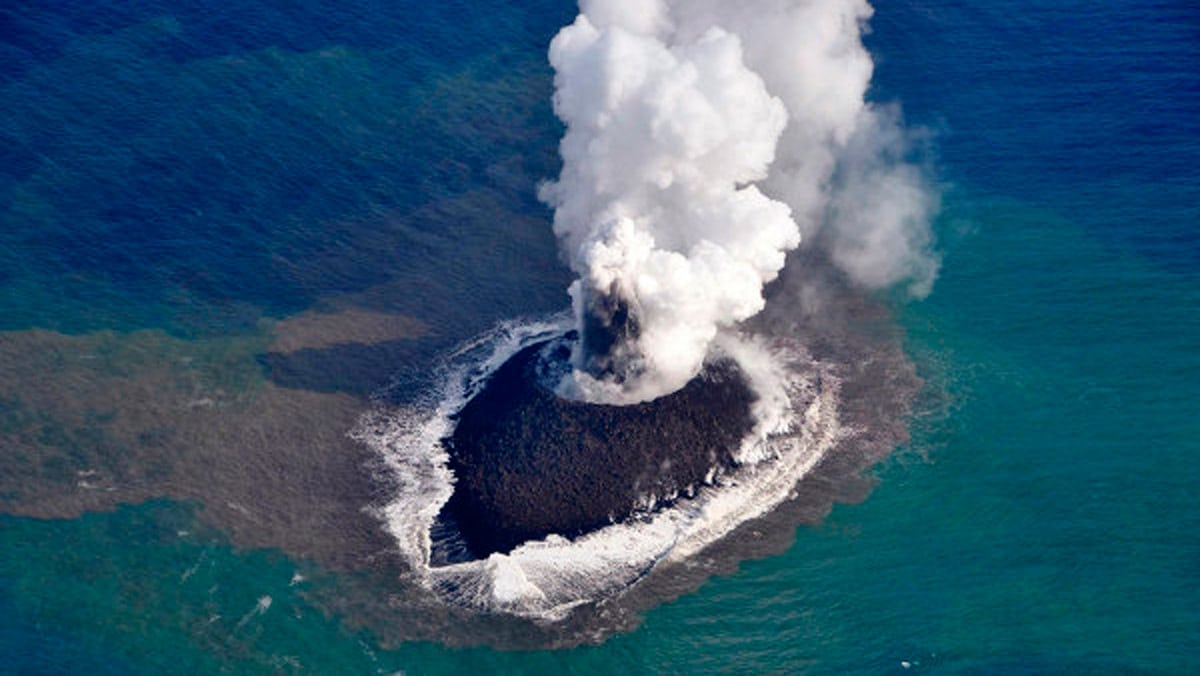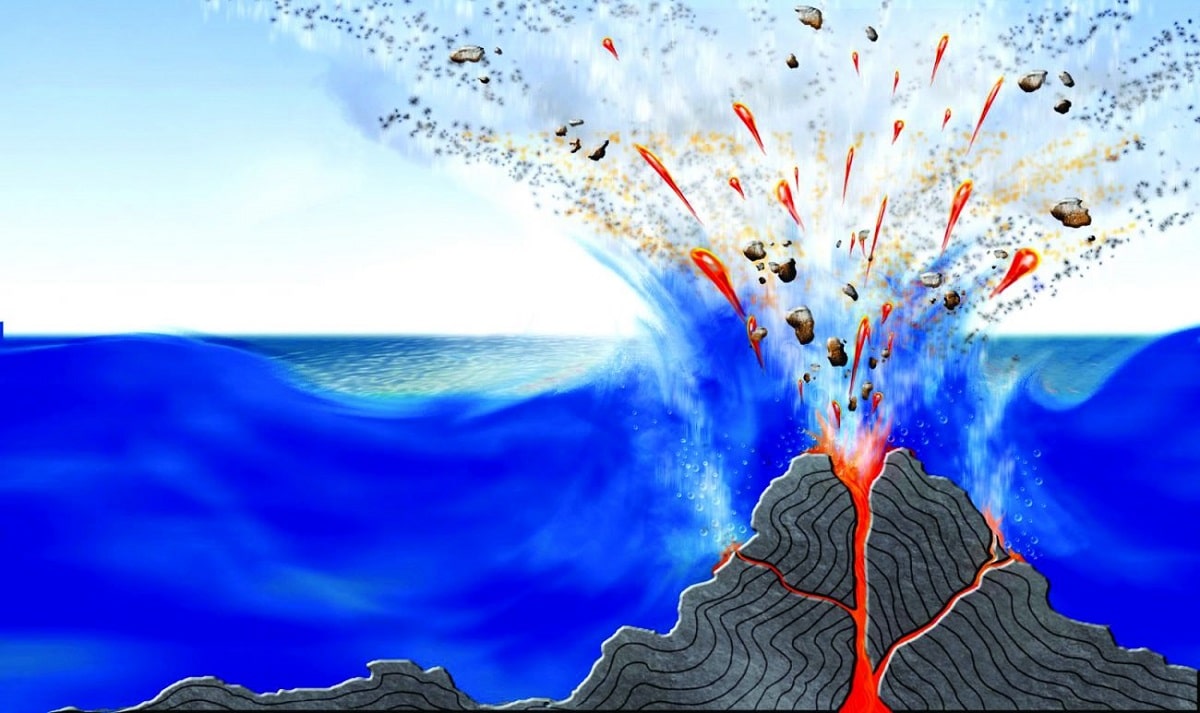
Un volcano submarine It is one that is below the surface of the sea. It has different features though functions the same. Its formation is also similar to a classical surface volcano. They are quite important in the cycle of construction and destruction of the sea floor.
Therefore, we are going to dedicate this article to tell you everything you need to know about the submarine volcano, what are its characteristics, origin and importance.
What is an underwater volcano

Submarine volcanoes are a phenomenon that occurs at the bottom of the ocean, similar to what occurs on the tops of high mountains on the Earth's surface, where fiery lava falls underwater.
When they spew lava, they destroy and build; They are known to damage the ocean floor and kill existing species around the eruption, but they build by releasing nutrients that allow bacteria and the ability to survive extreme temperatures to give rise to new species.
The discovery of giant sharks and hitherto unknown species in the Solomon Islands, where the Kavaki volcano is located, It is the result of gases and metals from underwater volcanic eruptions that favor the chemical composition of the water, according to researchers.
This chemical composition can form large food chains and new heat-tolerant species that fill spaces where other organisms existed before.
How is an underwater volcano formed?

Submarine volcanoes are born in cracks, geological faults or fissures that separate tectonic plates. They originate from weak areas of the earth's crust where lava flows try to reach the surface. When they spew out lava, they create new areas on the ocean floor.
There are believed to be more than 3.000 active volcanoes in the world, which can be found safely close to earth or at depths of more than 2.000 meters. These volcanoes spew 70% of their yearly magma, which helps form new crust. The presence of vents or hydrothermal vents indicates that volcanic activity is taking place in an area. For example, in the Hawaiian Islands there is intense subsea volcanic activity independent of different regions originating from hotspots.
Hot spots are places where magma is ejected and crust moves over it, forming new volcanoes, which help align islands. Volcanoes near the surface can form islands in the sea; those at depth create overlapping plates and alter bottom ecosystems.
They are dangerous?

Marsili underwater volcano
Although most submarine volcanoes do not pose a great danger, some have drawn the attention of the scientific community, such as Marsili, the largest volcano in Europe, 150 kilometers from Lombardo, Italy.
It is a huge three kilometer underwater volcano that is very active and constantly attracts the attention and attention of the scientific community.
Kolumbo underwater volcano
Some volcanoes have devastated islands during eruptions, causing numerous casualties, such as the eruption of the Mount Kolumbo on the Greek island of Santorini in 1628, which swallowed much of the island. The volcano is under constant study to prevent another disaster.
underwater volcano Tonga
Located on the island of Tonga in Western Polynesia, Oceania, the Columbo submarine volcano is a chain of volcanoes that makes it one of the most volcanically active regions in the world because the archipelago lies on the edge of the tectonic plate that connects Australia and the Pacific Ocean ring of fire.
Hunga underwater volcano
In December 2014, the Hunga volcano erupted violently and remained active for several weeks, creating a new island 2 kilometers long and 100 meters high.
Krakatoa underwater volcano
Perhaps the most famous volcano for its devastation is Krakatoa, which erupted on August 27, 1883 and disappeared on the island of Java. It appeared in the seaway more than a hundred years ago and has been continuously erupting. In 2018, the eruption of the volcano triggered a tsunami, a massive wave, in Indonesia that killed 300 people and injured 1,000 others.
In addition to Krakatoa, there are many famous underwater volcanoes, such as Kilauea in the Hawaiian Islands, that are unrivaled tourist attractions. This is an underwater volcano that arose over thousands of years to form the island of Hawaii. Sometimes it also spews lava into the sea, which contrasts with the bright fire that spreads in the blue water, forming a colorful spectacle that attracts tourists to visit.
Curiosities
- In 2011, on the Isla del Hierro in the Canary Islands, a volcano erupted for five months.
- In 2013, in Japan, an underwater volcano near the island of Shimo spewed out so much volcanic material that it bubbled to the surface, joined and expanded 11 times.
- Iceland is also known for its underwater volcanoes, which attract tourists from many parts of the world.
- Scientists estimate that there are thousands of active submarine volcanoes around the world that spew about 75 percent of their magma each year. Also, submarine volcanic eruptions help form new crust.
- Most submarine volcanoes occur in areas where oceanic plates diverge, such as the Mid-Atlantic Ridge. A small number of submarine volcanoes are independent of the exhalation zone, arising from well-known hotspots, such as the Hawaiian Islands, where there is a fixed point from which magma emerges and the crust moves over it, forming new volcanoes, for what, for example, the Hawaiian Islands are aligned.
- A good indicator of volcanic activity in the area is the presence of fumaroles or hydrothermal vents, which indicate that the area is where the magma is relatively close to the surface, and therefore likely near submarine volcanoes.
- The type of underwater volcano and eruption depends to a large extent on the depth at which it is found, since pressure is a very important factor.
- The eruptions can be sporadic or continuous over time; if they are continuous and long-lasting, volcanic material can eventually rise to the surface and form new islands, such as Iceland, which sits on a ridge in the Atlantic Ocean.
I hope that with this information you can learn more about the submarine volcano and its characteristics.